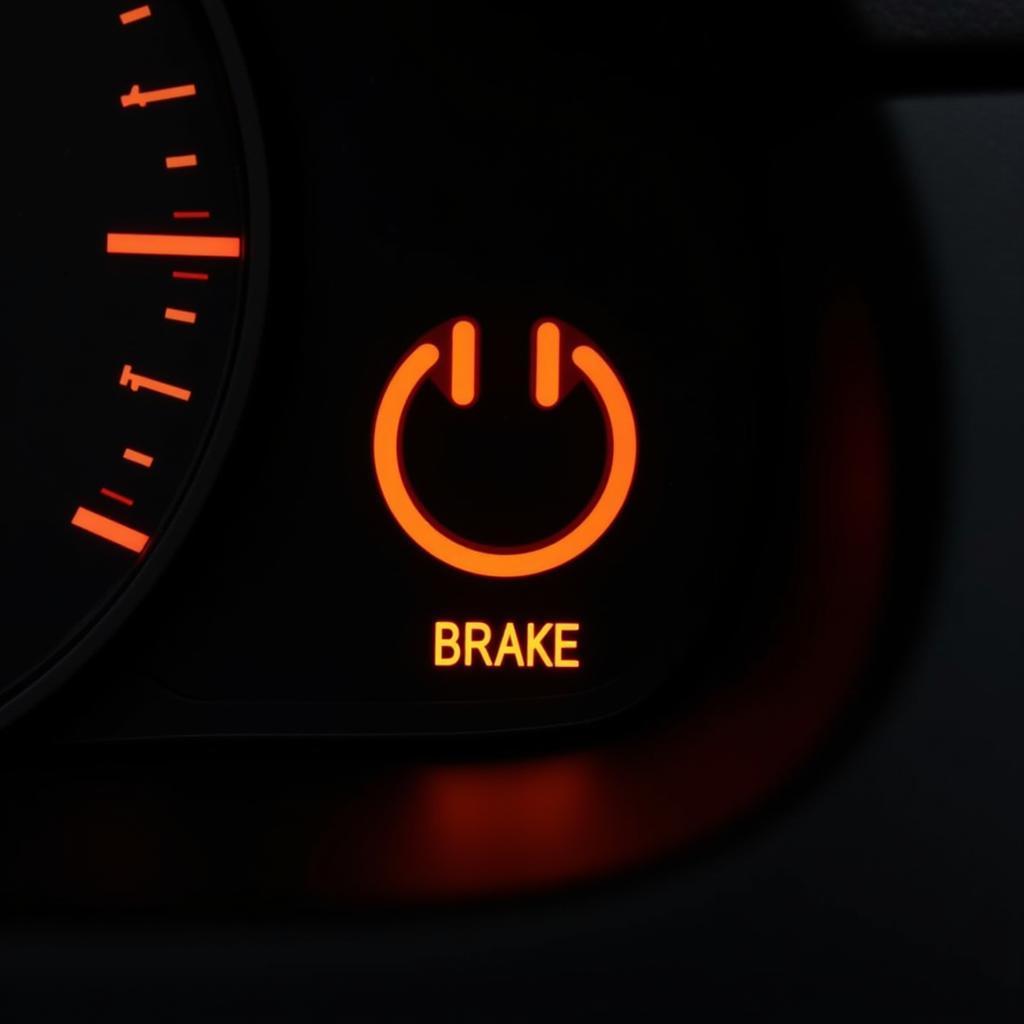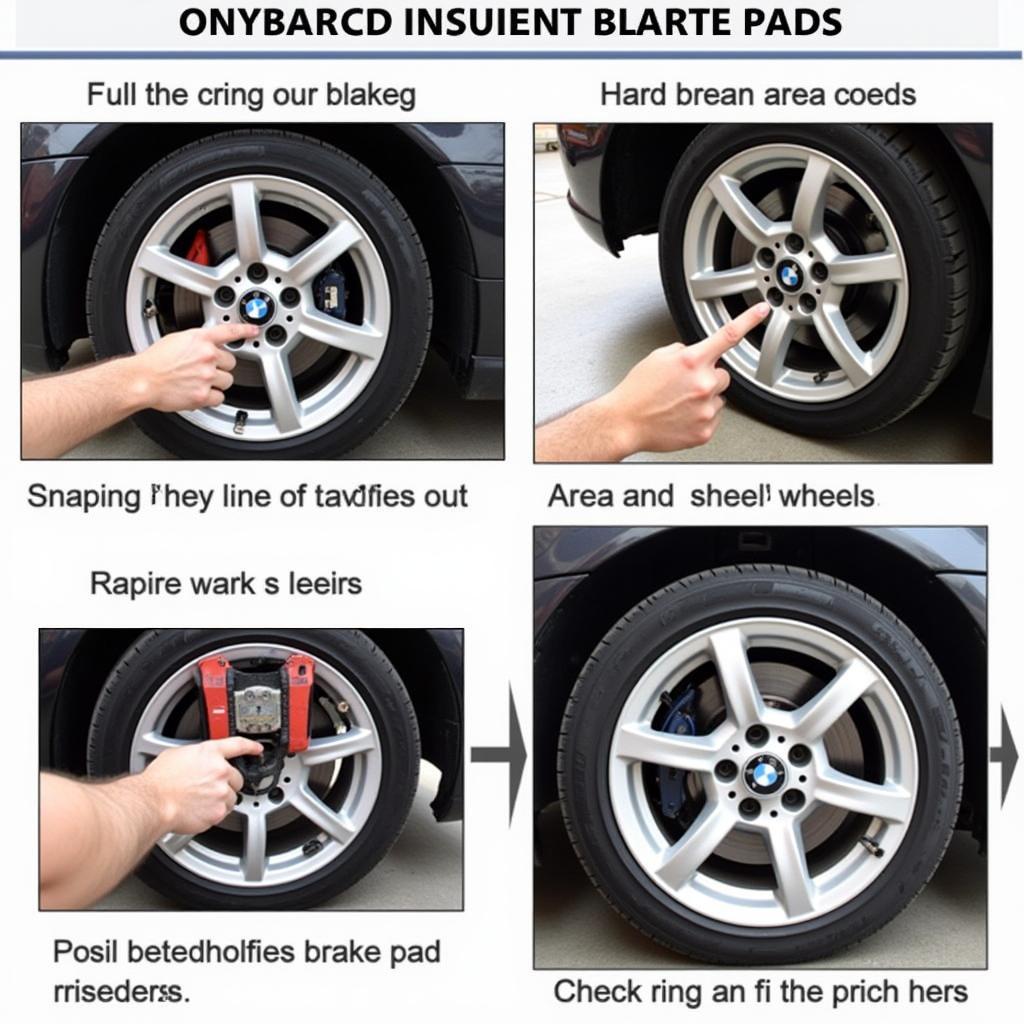The brake pad warning light flashing on your BMW 330Ci dashboard is never a welcome sight. It usually means one thing: it’s time for new brake pads. But don’t panic! This article will guide you through understanding the warning light, inspecting your brake pads, and what to do next.
 BMW 330Ci Dashboard with Brake Pad Warning Light
BMW 330Ci Dashboard with Brake Pad Warning Light
What Does the Brake Pad Warning Light Mean?
Your BMW 330Ci is equipped with a sensor in the brake system that monitors the thickness of your brake pads. When the pads wear down to a certain point, the sensor triggers the warning light on your dashboard. This system is crucial for your safety as it gives you ample warning before your brake pads reach a critically low level.
How to Inspect Your BMW 330Ci Brake Pads
While the warning light is a reliable indicator, it’s always a good idea to visually inspect your brake pads. Here’s how:
- Safety First: Park your BMW 330Ci on a level surface and engage the parking brake.
- Locate the Brake Calipers: Look behind your wheels; you’ll see the metal calipers that house the brake pads.
- Inspect the Pads: The brake pad is a rectangular piece of metal with a friction material on one side. You should be able to see the friction material through the spaces in the caliper.
- Check the Thickness: The friction material on the brake pads should be at least 1/4 inch thick. If it’s less than that, or if you see metal-on-metal contact, it’s time for new brake pads.
 Inspecting Brake Pads on a BMW 330Ci
Inspecting Brake Pads on a BMW 330Ci
What to Do When Your BMW 330Ci Brake Pad Light Comes On
If your brake pad warning light is on, it’s important to address the issue promptly. Driving with worn brake pads can significantly reduce your stopping power, putting you and other drivers at risk. Here are your options:
- Replace Your Brake Pads: This is the most common solution. You can take your BMW to a mechanic specializing in BMWs or tackle the job yourself if you have the skills and tools.
- Check the Brake Sensor: In some cases, the brake pad sensor itself may be faulty, triggering the warning light prematurely. A mechanic can diagnose this and replace the sensor if needed.
Why Choose OEM or High-Quality Aftermarket Brake Pads?
When it comes to brake pads, not all are created equal. Using high-quality brake pads designed for your BMW 330Ci is crucial for optimal braking performance, safety, and longevity.
- OEM Brake Pads: Original Equipment Manufacturer (OEM) brake pads are specifically designed for your BMW model and often provide the best performance and compatibility.
- High-Quality Aftermarket Brake Pads: Reputable aftermarket brands offer brake pads that meet or exceed OEM specifications, often at a more affordable price point.
“Using the right brake pads can significantly impact your BMW’s braking performance,” says Mark Stevenson, a seasoned automotive technician with over 20 years of experience specializing in European vehicles. “Investing in quality parts ensures your safety and can save you money in the long run by preventing premature wear and tear on other brake components.”
Can I Still Drive My BMW 330Ci with the Brake Pad Light On?
While it’s technically possible to drive for a short distance with the brake pad warning light on, it’s strongly discouraged. The longer you drive with worn brake pads, the greater the risk of further damage to your brake system, potentially leading to more costly repairs.
